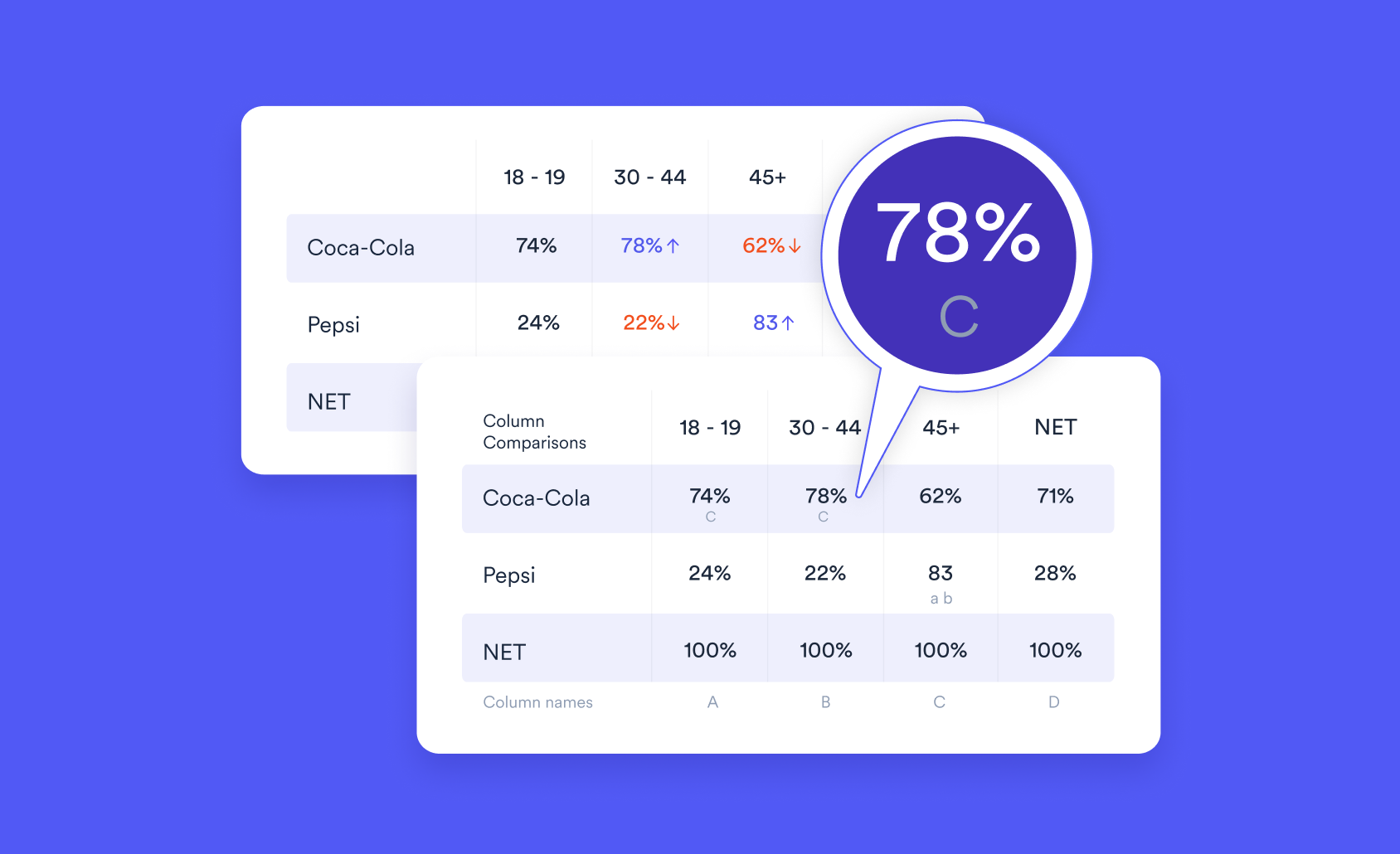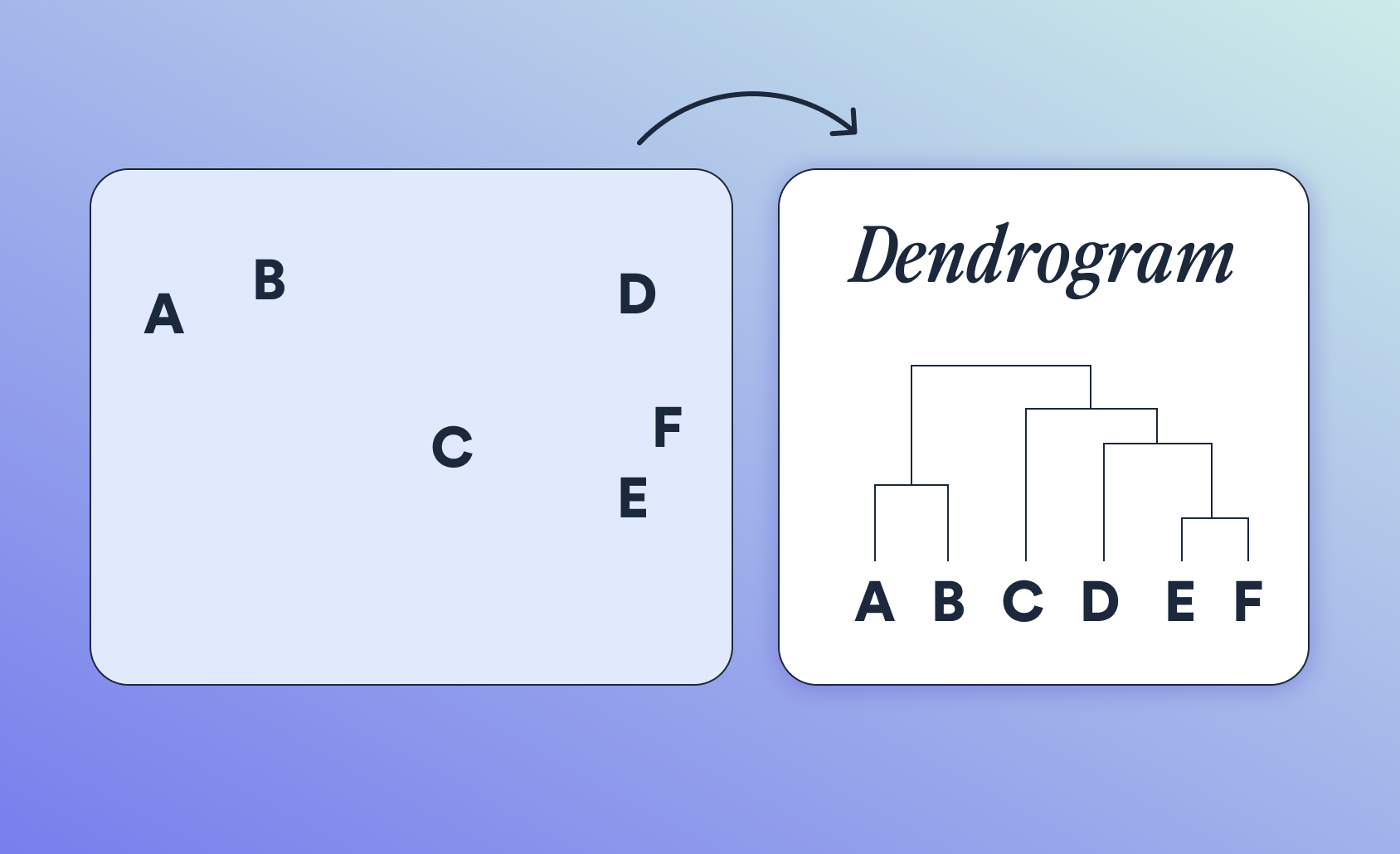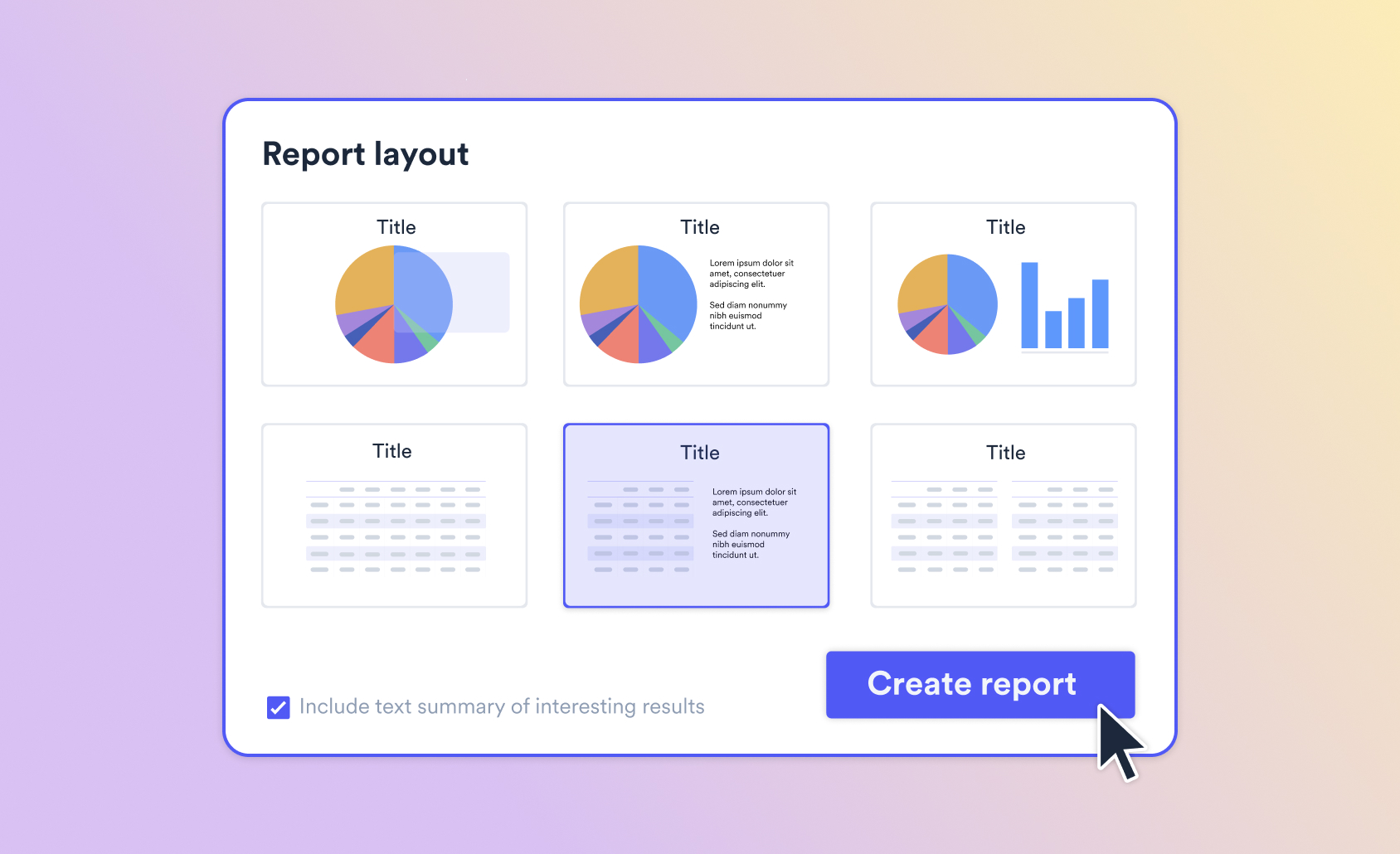
Using Price Salience for Pricing Research Studies
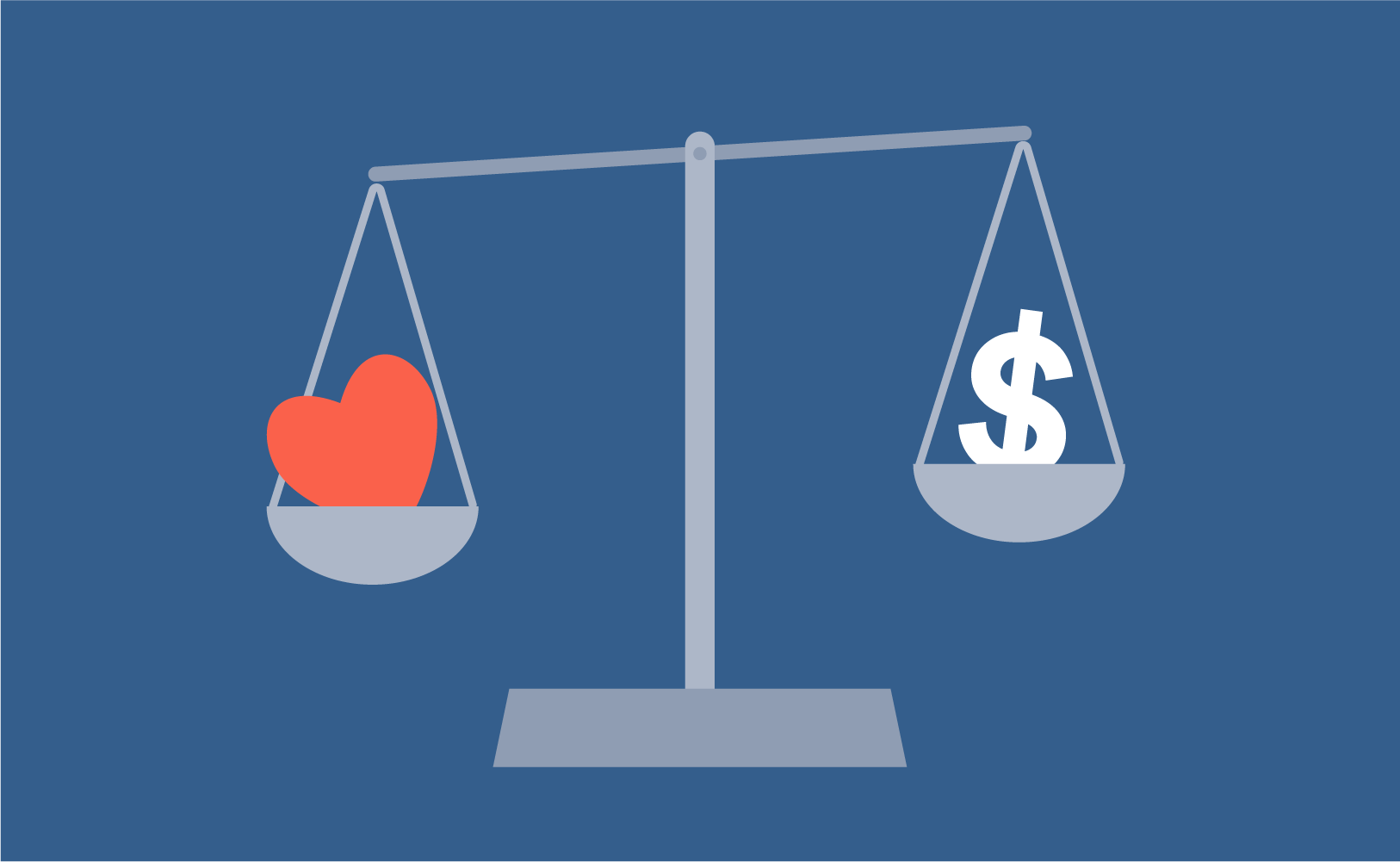
This is the first of six techniques that account for the vast majority of modern survey-based pricing research. You can reference the five other techniques here.
The first pricing research technique is Price Salience, which includes two approaches for working out if people are conscious of prices in a particular category. It answers the question: “Is the price of a product or service something they even think about?”
The first and simplest approach is to ask about reasons of preference for choosing something and to see how many times the price is mentioned. In the example below, I have asked people why they like their current cell phone provider. As you can see, price is the second most important factor. So, price is clearly very important within this market.
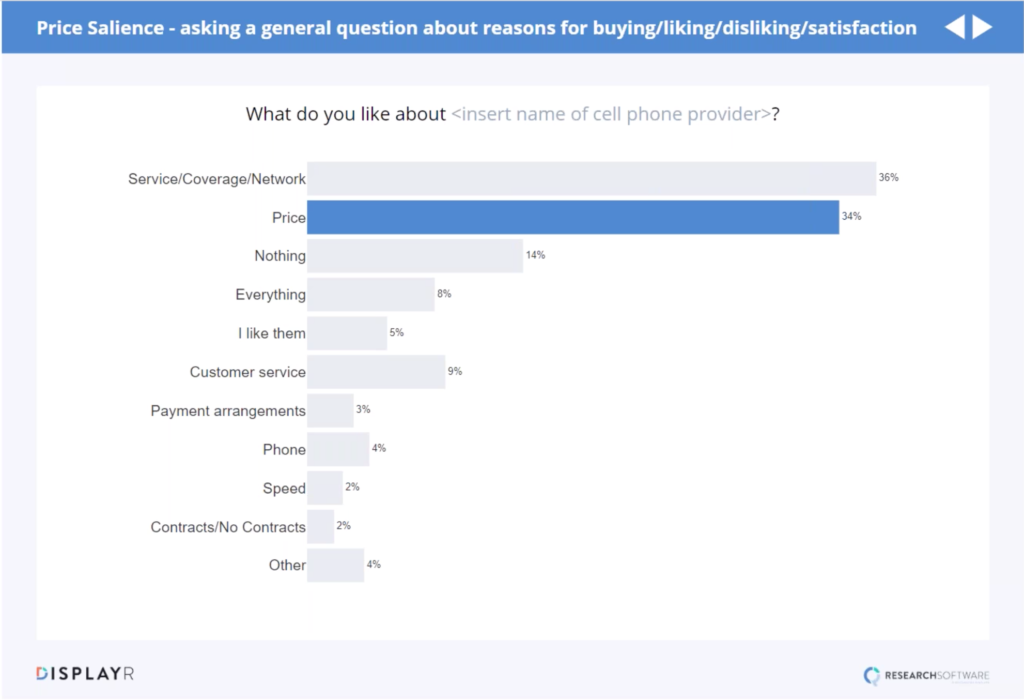
The second approach to Price Salience is to measure preference by asking people to rate the importance of price across different categories of products. In the chart below, I’ve used a four-point scale where people were asked if they’d stick with their preferred brands if they were on sale, or if they’d stick with their preferred brands even if they weren't on sale, if they only looked for the most heavily discounted brands, or if they buy what is cheapest.
As you can see, the last dark blue bar is the row for paper towels and it shows that only 25% of people say they ignore that price if it’s their preferred brand. By contrast, the blue bar in the top row for teabags shows that about 68% of people pay no attention to the price of their preferred brand.
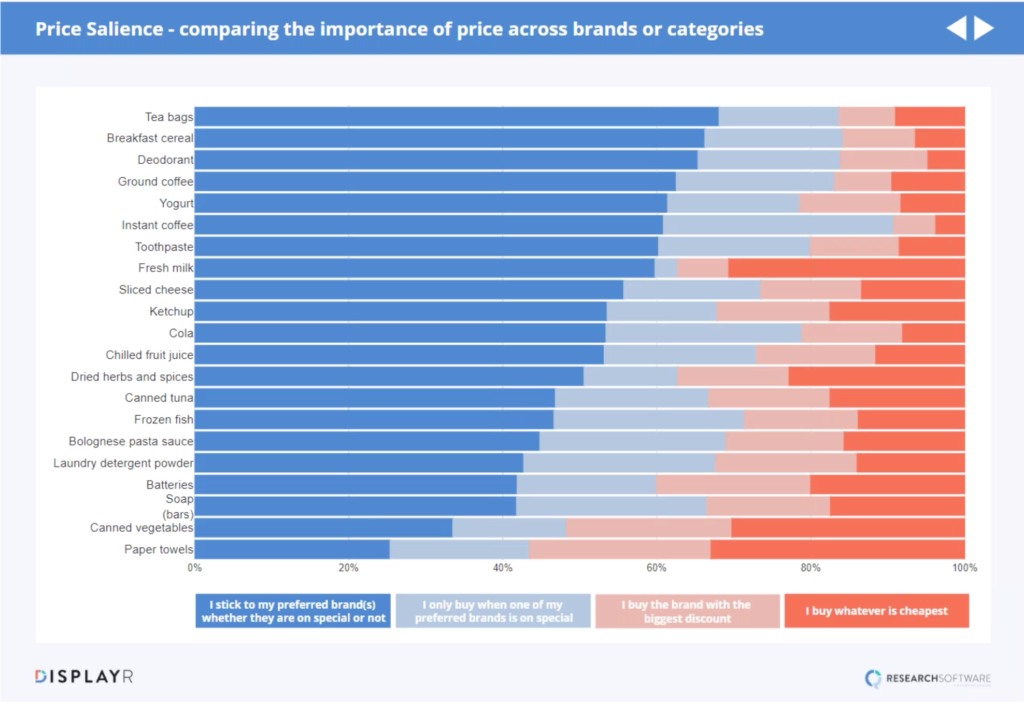
So, to use economic jargon the demand for tea bags is relatively elastic. This approach to using price salience has shown us that people tend to stick with their brands more when purchasing tea bags, regardless of price, at least more so than when purchasing paper towels.
For more examples on the other pricing research techniques see: Price Knowledge/Awareness, Stated Willingness-To-Pay, Price Sensitivity Meter, Random Assignment, Choice-Based Conjoint.

